Unconventional Ports
Top 10 Most Unconventional Video Game Ports of All Time!
It’s common for video games to be designed for specific consoles, operating systems, or middleware engines. If a publisher wants to reach a wider audience, a lot of effort is often required to port the original game to another platform. The technical specs can differ wildly from one platform to the next, so games sometimes have to be altered during the porting process. It would be easy to compile a list of “ports gone wrong,” but that’s not what this particular countdown is about. Double Dragon sucked on the Atari 2600, the ZX Spectrum version of Street Fighter II was a bad idea, and we all know that concessions had to be made when titles were ported to the Game Boy. Instead of focusing on objectively bad games, this list deals with specific design choices that were made during the porting process. While some of these changes were necessitated by technical limitations, we’re looking for something more substantial than bad graphics and sound. For better or for worse, the design choices discussed in this countdown ultimately defined the respective ports. We’ve already covered re-branded titles and games that were censored for taste, so neither of those concepts will be explored on this particular list.
10
Mega Man Anniversary Collection
Nintendo GameCube
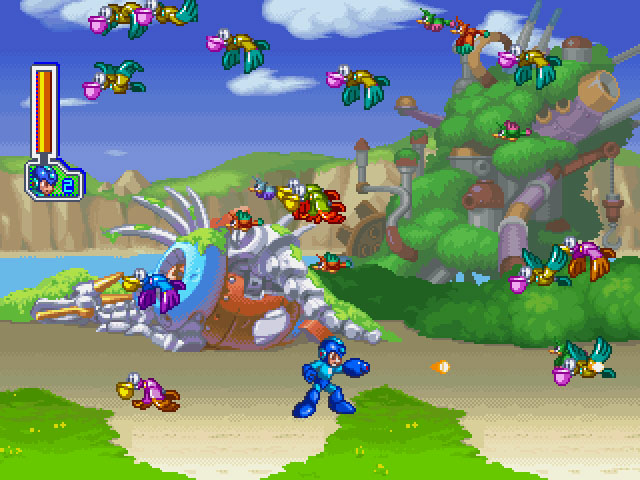
Mega Man Anniversary Collection is a compilation that includes the first eight Mega Man titles and a couple of unlockable bonus games. There were a handful of minor technical issues, but the games looked and played like the originals did for the most part. There was one significant difference in the GameCube version, however. Beginning with the original NES game, the Mega Man series has always been defined by a simple control scheme that had designated buttons for jumping and shooting. In the original releases, the “jump” button was always to the right of the “shoot” button. This was true on regardless of what system the game was initially made for. (Moreover, this control scheme was basically an industry standard that almost every game in the genre complied to.) Mega Man Anniversary Collection on the GameCube broke convention by swapping the placement of the buttons so that the “shoot” button was now to the right of the “jump” button. This layout felt awkward for anyone that was accustomed to the original games, and there was no way to reassign the buttons. Mega Man fans had to unlearn what they had learned to get the most out of the collection. That’s the kind of shit you do when you’re training to be a Jedi. It shouldn’t be necessary to play classic games.
9
Pac-Land
Nintendo Famicom
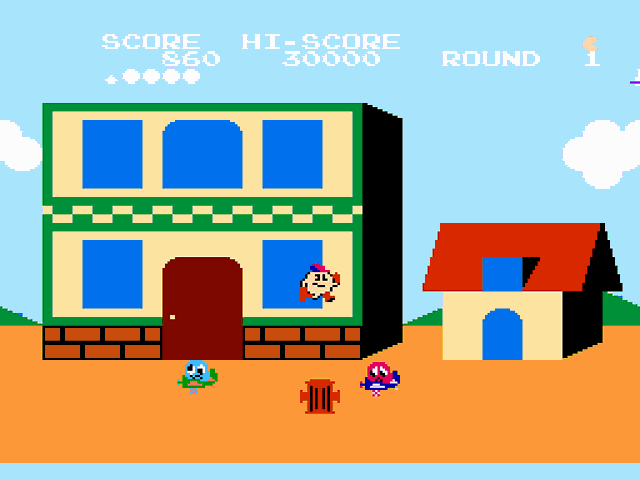
Pac-Land probably deserves more credit than it gets. It was one of the first side-scrolling platformers, and it beat Super Mario Bros. to market by over a year. It’s also the first game I can recall that had a double-jump mechanic, and it even featured parallax scrolling years before the feature would become commonplace. The game’s control scheme was a little peculiar, however. In lieu of a joystick, two buttons would move Pac-Man left and right while a third button was used to jump. When the game was ported to the Famicom, the movement could have simply been mapped onto the d-pad, but Namco decided to tie Pac-Man’s movement to the A and B buttons while the d-pad was used to jump. I concede that the layout of the original arcade game was already unconventional, but the Famicom port felt counter-intuitive and just plain wrong. What other platformer on the Famicom can you think of where you move with the face buttons and jump with the d-pad!? It makes me so Pac-Mad! For what it’s worth, the subsequent PC Engine version of Pac-Land offered a control scheme that let you use the d-pad for movement.
8
Daikatana
Nintendo 64
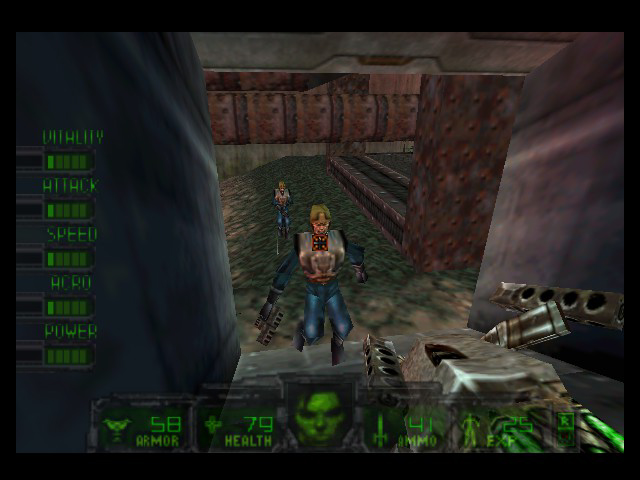
John Romero’s Daikatana was an overhyped first-person shooter that was wrought with numerous delays before it eventually launched to poor critical reception. The game failed to become the next big thing in the genre, but the Nintendo 64 port failed in an unusual way. The game was uglier on the N64 than it was on the PC, and it was missing one of the game’s most-touted features. The PC version featured two computer-controlled sidekicks that would supposedly provide assistance to the player. Their AI was notoriously awful, however, and their presence made the entire game feel like a glorified escort mission. Although the game’s marketing put a heavy focus on these sidekicks, they were ignored in the N64 version. The sidekicks were supposed to be one of the game’s biggest selling points, but they became a target of criticism instead. Ironically, the N64 version was better off without them. The missing feature was the best thing about the port! This doesn’t mean the game was any good, but it’s a rare example that shows that less is sometimes more. Another notable difference between the PC and N64 versions has to do with the game’s namesake weapon. In the PC version, players could wiled a powerful sword called the Daikatana. The N64 version let players wiled 25 weapons through various time periods, but the titular Daikatana was not among them for some reason. Unbelievable!
7
Silent Hill HD Collection
Multiplatform
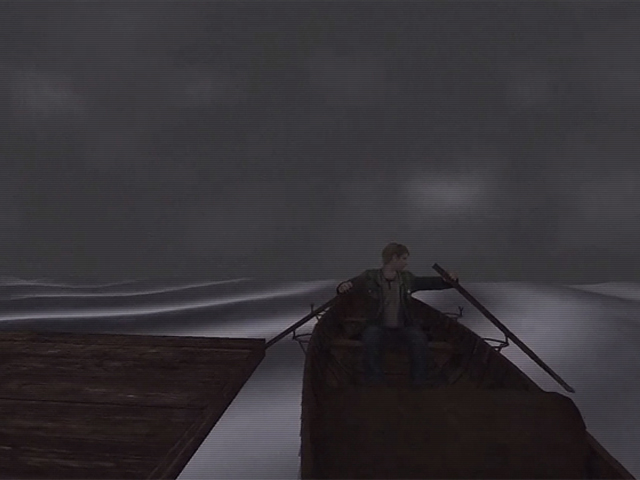
In theory, HD remasters are supposed to improve upon the original versions. Silent Hill HD Collection shows that this isn’t always the case. Konami had reportedly misplaced the original source code and Hijinx Studios only had buggy pre-release versions to work with, and this shows in the final product. There were gaps in the audio, typos in the subtitles, and glitches around every corner. Beyond the technical issues, there were a number of puzzling design choices. For instance, the pre-rendered cutscenes were carelessly stretched from 4:3 to 16:9. More pressing was the fact that the series’ signature fog was almost entirely removed. This made the game look worse and completely destroyed the atmosphere. Taking the fog out of Silent Hill would be akin to removing the blood from Mortal Kombat. The most puzzling change in the Silent Hill HD Collection has to do with the sign at the Silent Hill Ranch. For reasons I will never understand, someone thought it was necessary to change the font on the sign to Comic Sans! They are monsters!
6
X-Men vs. Street Fighter
Sony PlayStation
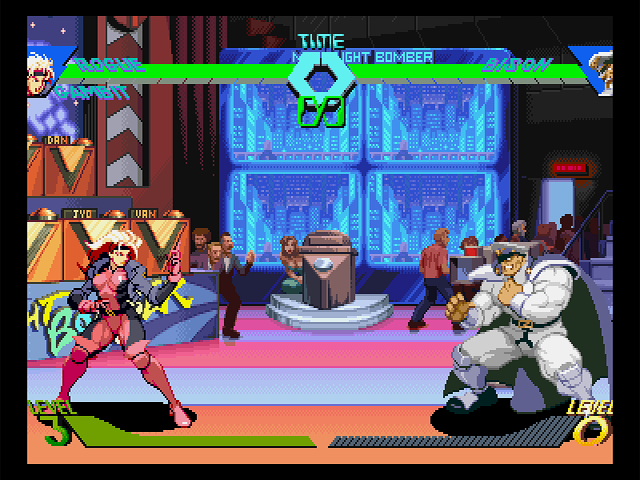
X-Men vs. Street Fighter was Capcom’s first crossover fighting game and their first title to incorporate dual-character selection and team-based battles. The gameplay was largely centered around the player’s ability to swap between their characters mid-battle, and this became a defining feature in Capcom’s subsequent Vs. titles. Although Capcom announced that the PlayStation and Saturn would both receive arcade-perfect ports, they were ultimately unable to deliver on this promise. Due to the PlayStation’s RAM limitations, a lot of the character animations were omitted. More significantly, the tag team format was completely gutted. Players no longer had the freedom to switch between characters on the fly. Instead, the second character could only be brought in for certain special attacks. You can’t fault Capcom for being mindful of hardware limitations. Nevertheless, X-Men vs. Street Fighter on the PlayStation was a completely different experience from what the arcade version offered. The tag team format was the essence of the game, so the PlayStation port almost felt pointless. The PlayStation versions of Marvel Super Heroes vs. Street Fighter and Marvel vs. Capcom suffered similar fates.
5
Super Mario Bros. Special
Multiplatform
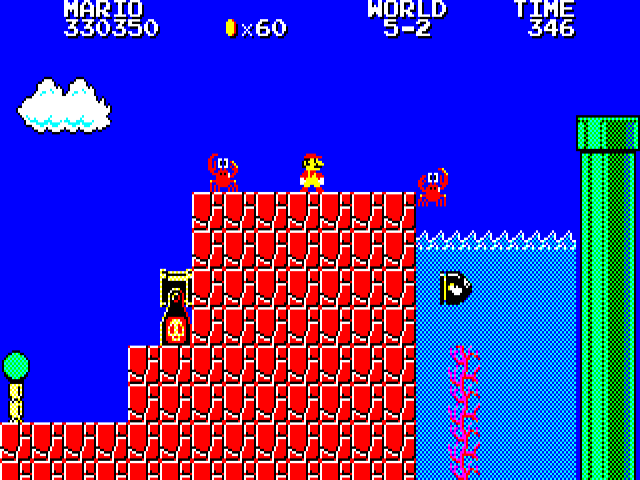
Super Mario Bros. was the most successful game of its era and one of the most important games ever released. It defined the NES as a console, so it might be surprising to learn that Nintendo allowed the game to be released on other platforms. In 1985, Hudson released modified versions of the game on the Sharp X1 and PC-8801. These computers were not designed with games like Super Mario Bros. in mind, so a lot of changes were necessary. Super Mario Bros. Special didn’t feature a scrolling screen like the original, and the action was instead broken up into a series of separate screens. The flip-screen format changed the way the game was played and made it impossible for Mario to keep his forward momentum through an entire stage. It wasn’t all bad, however. The game featured new enemies and power-ups, and I thought the inclusion of the hammer from Donkey Kong was a nice touch. Super Mario Bros. Special is so different from the original that it can’t really be considered the same game, but it’s such an oddity that I felt compelled to mention it anyway. We’re talking about a side-scrolling game without the scrolling! What’s next, Playboy without the nudity? Even though it’s a significant step down from the original, I think Hudson should be commended for being so forthright about the game. It certainly is special.
4
Pac-Man
Atari 2600
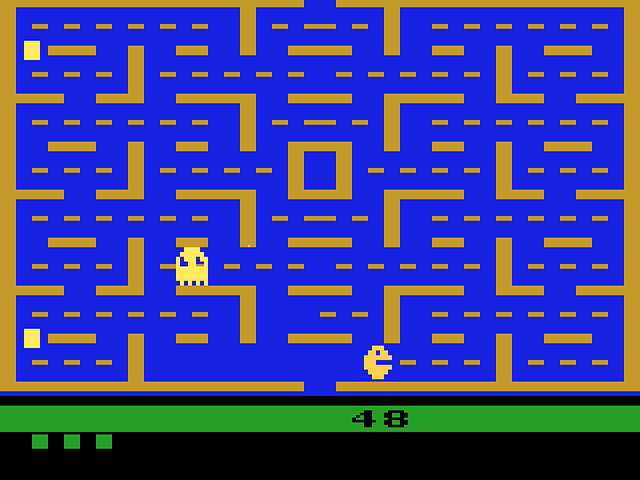
The Atari 2600 version of Pac-Man was an unmitigated disaster that contributed to the great video game crash of the early ’80s. It’s widely regarded as one of the worst coin-op conversions ever, and it was rightly criticized for its flickering sprites and horrible sound. This isn’t a list of bad ports, however. The reason why the game is being singled out is because of a concerted design choice that Atari made pertaining to the game’s color pallet. The original arcade version of Pac-Man was set on a black background, but the Atari 2600 port had a blue background instead. This change was made in response to an official Atari policy demanding that only space-based games should feature black backgrounds. The market was oversaturated with Space Invaders clones, so I can understand why Atari would want to encourage variety in their products. At the same time, everyone was already familiar with Pac-Man, so intentionally changing the color scheme for the home release was oft-putting. On a related note, yellow on black is a lot easier on the eyes than yellow on blue. Once you go black, you should never go blue.
3
The Legend of Zelda: Twilight Princess
Nintendo Wii
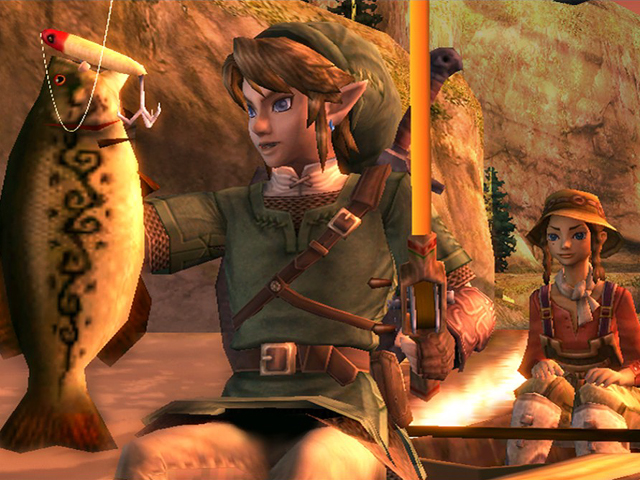
Twilight Princess was conceived as a GameCube game, but Nintendo realized that it could also act as an effective launch title for the Wii. The Wii version showcased how the system’s new control scheme could be applied to classic genres. Using the Wii remote to swing your sword, aim your slingshot, or cast your fishing rod added a new twist to the game. What made the new controls unconventional was the fact that the developers had to completely change the layout of the entire game in order to facilitate them. In past Zelda games, Link had been left-handed, and this was true in the GameCube version of Twilight Princess as well. This kind of thing is of no consequence when you can swing a sword with the push of a button, but motion controls complicated things somewhat. Most people are right-handed, and Nintendo felt that it would be strange for them to swing the Wii remote with their right hand to control a sword in Link’s left hand. Instead of merely changing Link’s dominant hand for the Wii release, they mirrored the entire map and swapped any references to “east” and “west.” When the HD version of Twilight Princess was released on the Wii U, it dropped the motion controls and used the original, non-mirrored orientation from the GameCube version. The Wii release of Twilight Princess had a brighter spotlight than the other versions, but it’s still the odd man out.
2
Q*bert
MSX
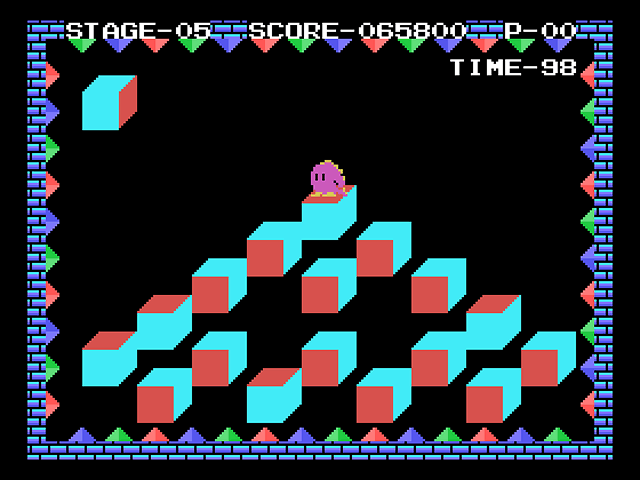
Q*bert is a classic arcade game that challenged players to hop around on a pyramid of cubes while avoiding obstacles and enemies. The game’s eponymous protagonist was one of the most recognizable video game icons of the early ’80s, and he is still fondly remembered today. (That’s why Disney featured him in Wreck-It Ralph.) Q*bert was ported to many different platforms, but there was something different about the MSX version. This port had more in common with Q*bert’s Qubes than it did with the original game, but the main reason I’m mentioning it on this list is because it completely redesigned Q*bert himself. Q*bert was a small, orange, armless, wide-eyed critter with a giant snout. In the MSX version, however, he was a purple dragon with yellow spines and a long tail. His trademark snout was nowhere to be seen, and he now had arms and an expressive mouth. It wasn’t uncommon for games to be re-branded as new franchises – Adventure Island was a re-skinned version of Wonder Boy, for instance – but the MSX version of Q*Bert changed an iconic character without changing the branding. That would be like playing a version of Donkey Kong that replaced the famous ape with an elephant who was still named Donkey Kong.
1
Final Fight Guy
Super Famicom
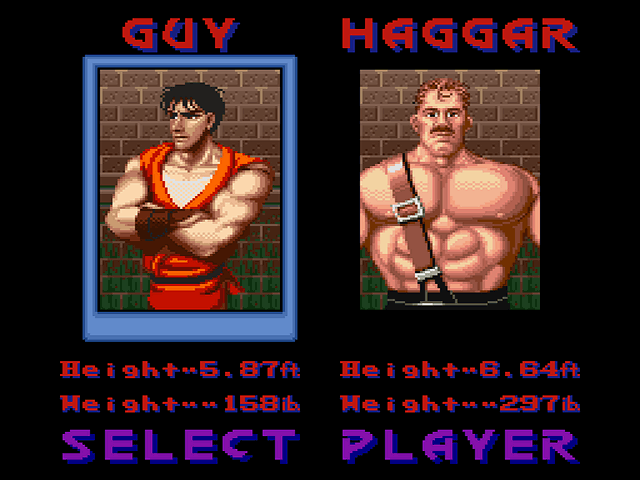
Final Fight was a side-scrolling beat ’em up from Capcom that first hit the arcades in 1989. When it was ported to the Super Famicom the following year, several concessions had to be made. The two-player co-op support was removed, an entire stage was missing, and one of the playable characters was nowhere to be seen. The original version gave players three characters to choose from. Mike Haggar was a burly pro wrestler, Guy was a fast-moving ninja, and Cody was your typical balanced fighter. In the Super Famicom version, Guy was nowhere to be seen and players could only select Haggar and Cody. Some of these concessions could be written off to Capcom’s inexperience with the new hardware, and squeezing the game onto a 4mb cartridge obviously meant that some content was going to be cut. There’s nothing unconventional about a stripped-down arcade conversion, but Capcom followed up with a revised version of the game that was completely mind-boggling. Final Fight Guy was released on the Super Famicom in 1992 and marked the return of Guy! Unfortunately, the game was still missing a stage and the co-op mode was not restored. Worst of all, it only featured two out of the three main characters. Guy was added to the roster, but Cody was inexplicably removed. I can look past mediocre arcade ports, but it’s so bizarre to have two incomplete versions of Final Fight on the same system. To borrow a line from Ron Swanson, “Never half-ass two things. Whole-ass one thing.”

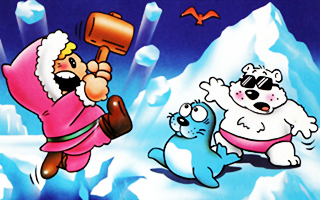
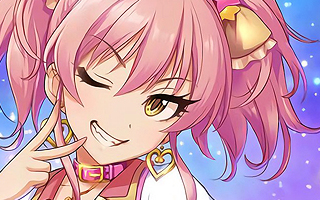
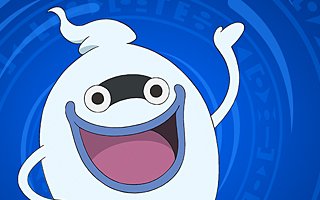
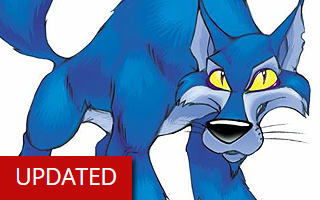
Do you agree with this list? Let us know what you think by leaving a comment below. Your opinion matters!